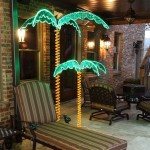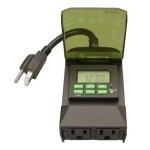How to Seal Outdoor Electrical Conduit
Outdoor electrical conduit, which houses electrical wiring, is susceptible to moisture and other environmental elements. Proper sealing is crucial to prevent water ingress, corrosion, and potential electrical hazards. This article outlines the essential steps and considerations for effectively sealing outdoor electrical conduit, ensuring the safety and longevity of your electrical system.
1. Choosing the Right Sealing Material
The selection of appropriate sealing material is paramount for successful conduit sealing. Different materials offer varying levels of protection and compatibility with the conduit type and environmental conditions. Common sealing materials include:
- Sealant Tape: Available in various materials like PVC, rubber, or self-fusing silicone, sealant tape offers a quick and convenient sealing solution. It is typically applied over conduit joints and fittings, providing a moisture-resistant barrier. However, its effectiveness can be limited in extreme situations and may require multiple layers for optimal protection.
- Sealant Compound: Sealant compounds come in different forms, such as putty, paste, or liquid. They are applied directly to the conduit joints or fittings, creating a durable and waterproof seal. Sealant compounds are generally more resilient than tape, offering better protection against water ingress and environmental elements.
- Expansion Plugs: Expansion plugs are pre-formed plugs designed to be inserted into conduit openings. They provide a secure and permanent seal, expanding to fill gaps and prevent moisture intrusion. Expansion plugs are particularly effective for sealing conduit entrances in walls, roofs, or other structures.
- Liquid Waterproofing Compound: Liquid waterproofing compounds are applied to the exterior of the conduit, creating a protective coating resistant to water, UV rays, and corrosion. They offer excellent protection against harsh environments and can be applied to both above-ground and underground installations.
2. Preparing for Conduit Sealing
Prior to sealing, adequate preparation is necessary to ensure a successful and durable seal. This involves:
- Cleaning the Conduit: Thoroughly clean the conduit and fittings using a suitable cleaning agent. Remove any dirt, debris, or residual moisture that could affect the sealing effectiveness.
- Inspecting for Damage: Carefully inspect the conduit for any cracks, holes, or other damage that could compromise the integrity of the seal. Repair any damage before proceeding with sealing.
- Selecting Appropriate Sealing Method: Based on the conduit type, environment, and desired level of protection, choose the appropriate sealing method and material. Consider factors like temperature range, UV exposure, and the presence of chemicals or corrosive substances.
3. Sealing the Conduit
Once the preparation is complete, sealing the conduit can be done using the chosen method and material. Here are general guidelines for common sealing techniques:
Sealant Tape:
- Wrap the tape tightly around the conduit joint or fitting, ensuring complete coverage and overlapping each layer by at least 50%.
- Apply consistent pressure while wrapping to ensure a secure and airtight seal.
- For added protection, multiple layers of tape can be applied.
Sealant Compound:
- Apply a generous amount of sealant compound to the conduit joint or fitting, ensuring complete coverage of the gap.
- Smooth the sealant compound using a putty knife or other suitable tool, creating a smooth and uniform surface that will prevent water intrusion.
- Allow the sealant compound to cure completely according to the manufacturer's instructions before exposing the conduit to water.
Expansion Plugs:
- Insert the expansion plug into the conduit opening, pressing it firmly until it expands and fills the gap.
- Ensure the plug is securely seated and provides a tight seal against the conduit wall.
- For larger openings, multiple plugs may be required.
Liquid Waterproofing Compound:
- Apply the liquid compound evenly to the exterior of the conduit, ensuring complete coverage.
- Allow the compound to dry thoroughly according to the manufacturer's instructions before exposing the conduit to water.
- Multiple coats may be required for optimal protection.
The specific instructions for each sealing material and technique may vary depending on the manufacturer. Always consult the manufacturer's guidelines for proper application and curing time.
By following these steps and carefully choosing the appropriate sealing material, you can effectively protect your outdoor electrical conduit from moisture and other environmental elements, ensuring the safety and longevity of your electrical system. Regular inspection and maintenance are crucial to maintaining the effectiveness of the seal over time.

Conduit Seals Cable For Efficient Use In And Around Conduits Roxtec Inc Us
How To Seal An Outdoor Electrical Box Quora

Soudapack Wst Watertight Sealing Of Cable

How To Run Conduit Through Exterior Wall Aerosusa

How To Run Conduit Through Exterior Wall

Conduit Seals Cable For Efficient Use In And Around Conduits Roxtec Inc Us

How To Extend An Exterior Electrical Granworks

Cantex Pvc Weatherproof Exposed Electrical Box Installation

Installing Conduits Outdoors Aerosusa

How Do You Seal A Wire Conduit Polywater
Related Posts







